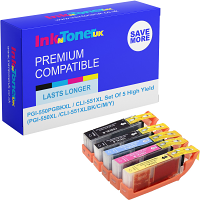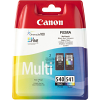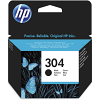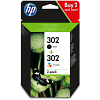Most of us have used a Colour Printer at least once in our lives and it’s self-explanatory that a colour printer requires Ink Cartridges, but do you know how the cartridges are made? The CMYK colours that are used to reflect light are completely different to RGB colours that are used to transmit light; instead, the Ink Cartridges in CMYK colours consist of; Cyan, Yellow, Magenta, and Black. They are used to create Black. These colours are also often the colours found in printers. On the other hand, all colours for any display that transmits light are Red, Blue and Green, which are RGB models; RGB models are displayed on your TV’s and computers by using the colours to transmit light.

Similar materials in Ink are used in art and identifying what right colours to use and what to mix is important in creating vivid images. Ink and paint are very alike. Ink is not just used for printing; it’s used for writing and drawing also. It’s crazy to think that Ink dates back to the ancient Egyptians with their hieroglyphics, or the Chinese with their calligraphy or even the Romans!
Primarily… what is Ink and how is it made?
A combination of ingredients are incorporated with the makes of Ink. These include resin, a variety of pigments, varnish, lubricants and wax. All of these are mixed at high temperatures to form a mixture that is alike. Titanium dioxide is used to lighten the pigments whilst carbon black pigments are made from Black Ink, meanwhile varnish is used for any base of any Ink. The pigments are used in the mixture to break any clumpy parts formed from the resins (which secure the ingredients together). An oil is a common base used in the making of printer Ink.
In simpler terms, it goes a bit like this:
- Varnish Manufacturing
- Premix
- Grinding
- Dilution
- Packaging
The heating process differs for certain printers like Brothers or Epson. A substitute material called piezoelectric is used and an electrical current then changes the shape of the piezoelectric. The pressure forces the ink to form a droplet into the nozzle.
Did you know…?
- Did you know that certain fonts use more Ink?
Fonts like ‘Arial’ use more Ink since it’s larger, meaning cartridges run out faster than fonts like Garamond or Courier.





























